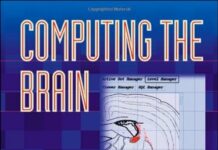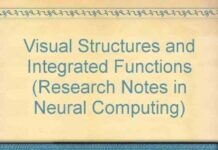
Ebook Info
- Published: 1997
- Number of pages: 420 pages
- Format: PDF
- File Size: 1.02 MB
- Authors: Michael A. Arbib
Description
In Neural Organization, Arbib, Érdi, and Szentágothai integrate structural, functional, and dynamical approaches to the interaction of brain models and neurobiologcal experiments.In Neural Organization, Arbib, Érdi, and Szentágothai integrate structural, functional, and dynamical approaches to the interaction of brain models and neurobiologcal experiments. Both structure-based “bottom-up” and function- based “top-down” models offer coherent concepts by which to evaluate the experimental data. The goal of this book is to point out the advantages of a multidisciplinary, multistrategied approach to the brain. Part I of Neural Organization provides a detailed introduction to each of the three areas of structure, function, and dynamics. Structure refers to the anatomical aspects of the brain and the relations between different brain regions. Function refers to skills and behaviors, which are explained by means of functional schemas and biologically based neural networks. Dynamics refers to the use of a mathematical framework to analyze the temporal change of neural activities and synaptic connectivities that underlie brain development and plasticity—in terms of both detailed single-cell models and large-scale network models. In part II, the authors show how their systematic approach can be used to analyze specific parts of the nervous system—the olfactory system, hippocampus, thalamus, cerebral cortex, cerebellum, and basal ganglia—as well as to integrate data from the study of brain regions, functional models, and the dynamics of neural networks. In conclusion, they offer a plan for the use of their methods in the development of cognitive neuroscience.
User’s Reviews
Editorial Reviews: About the Author Michael Arbib has played a leading role at the interface of neuroscience and computer science ever since his first book, Brains, Machines, and Mathematics. From Neuron to Cognition provides a worthy pedagogical sequel to his widely acclaimed Handbook of Brain Theory and Neural Networks. After thirty years at University of Southern California he is now pursuing interests in “how the brain got language” and “neuroscience for architecture” in San Diego.Peter Erdi is Henry R. Luce Professor of Complex Systems Studies at the Center for Complex Systems Studies, Kalamazoo College, Kalamazoo, MI.
Reviews from Amazon users which were colected at the time this book was published on the website:
⭐This reference considers the organization and function of the brain. The structural approach considers neural morphology and synaptic connectivity. It is noted that pasterns of reciprocal interaction are common, binding structural units together. The functional approach considers functional decomposition of skills or behavior. Computational neural networks are used in models but are constrained by neuroanatomy and neurophysiology. ‘Schemas’ are functional entities. The dynamics approach allows analysis of spatiotemporal neural phenomena, and provides another bridge between structure and function. The reference begins with three chapters, each an overview on structure, function and dynamics. Chapters on the olfactory system, hippocampus, thalamus, cerebral cortex, cerebellum and basal ganglia follow.
⭐
⭐
⭐
⭐
Keywords
Free Download Neural Organization: Structure, Function, and Dynamics (A Bradford Book) in PDF format
Neural Organization: Structure, Function, and Dynamics (A Bradford Book) PDF Free Download
Download Neural Organization: Structure, Function, and Dynamics (A Bradford Book) 1997 PDF Free
Neural Organization: Structure, Function, and Dynamics (A Bradford Book) 1997 PDF Free Download
Download Neural Organization: Structure, Function, and Dynamics (A Bradford Book) PDF
Free Download Ebook Neural Organization: Structure, Function, and Dynamics (A Bradford Book)





